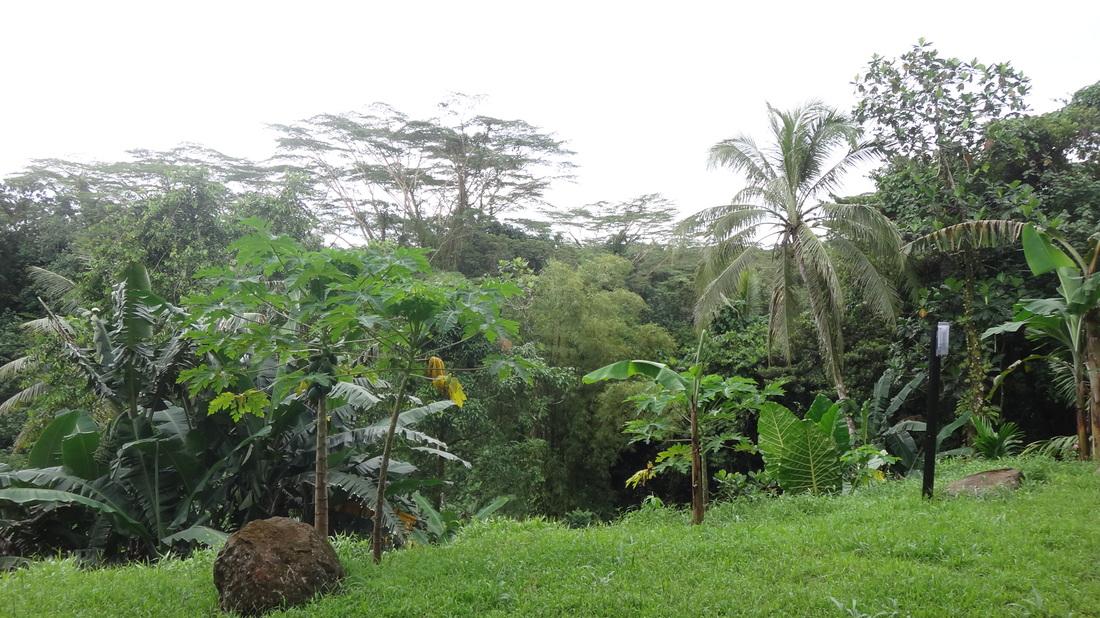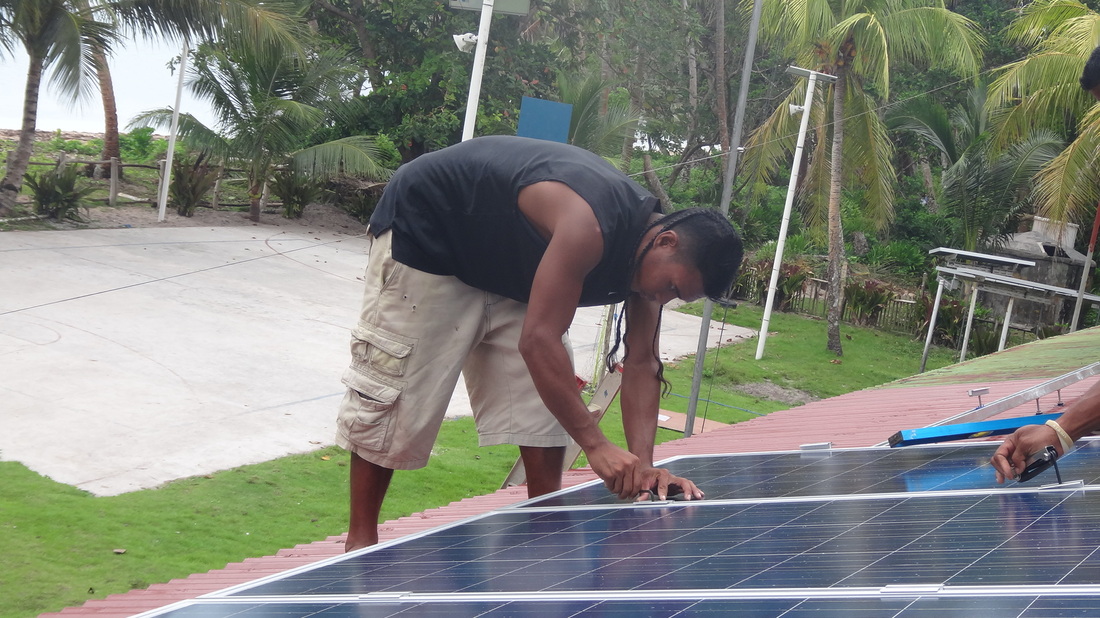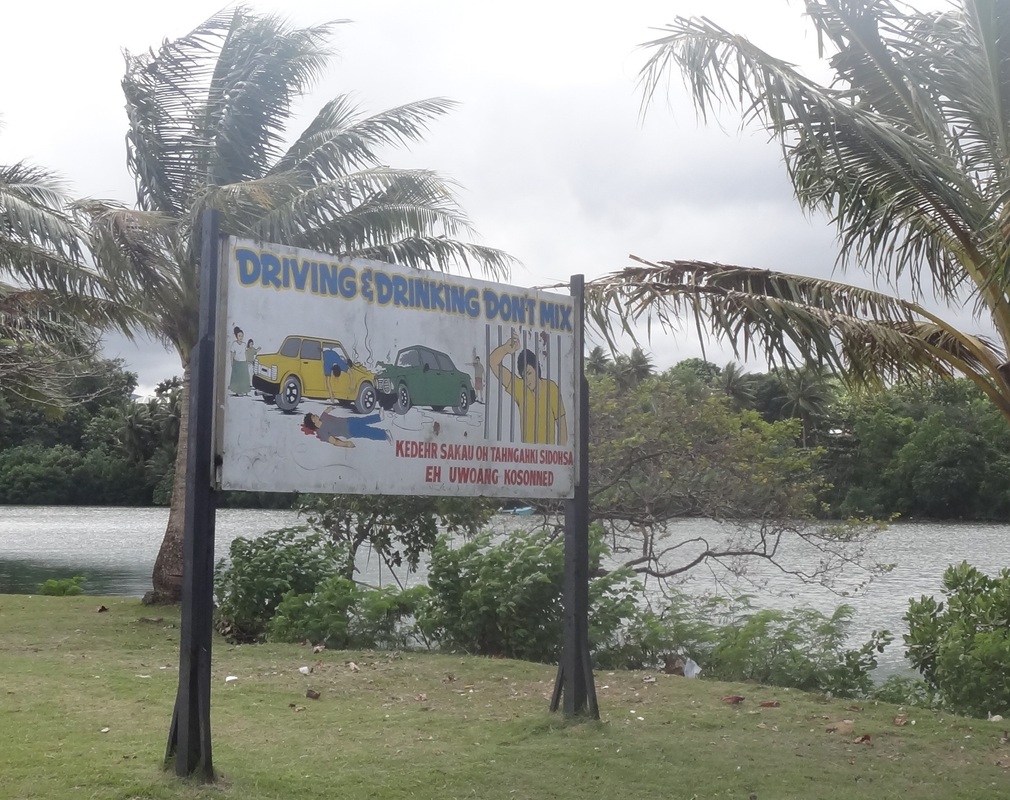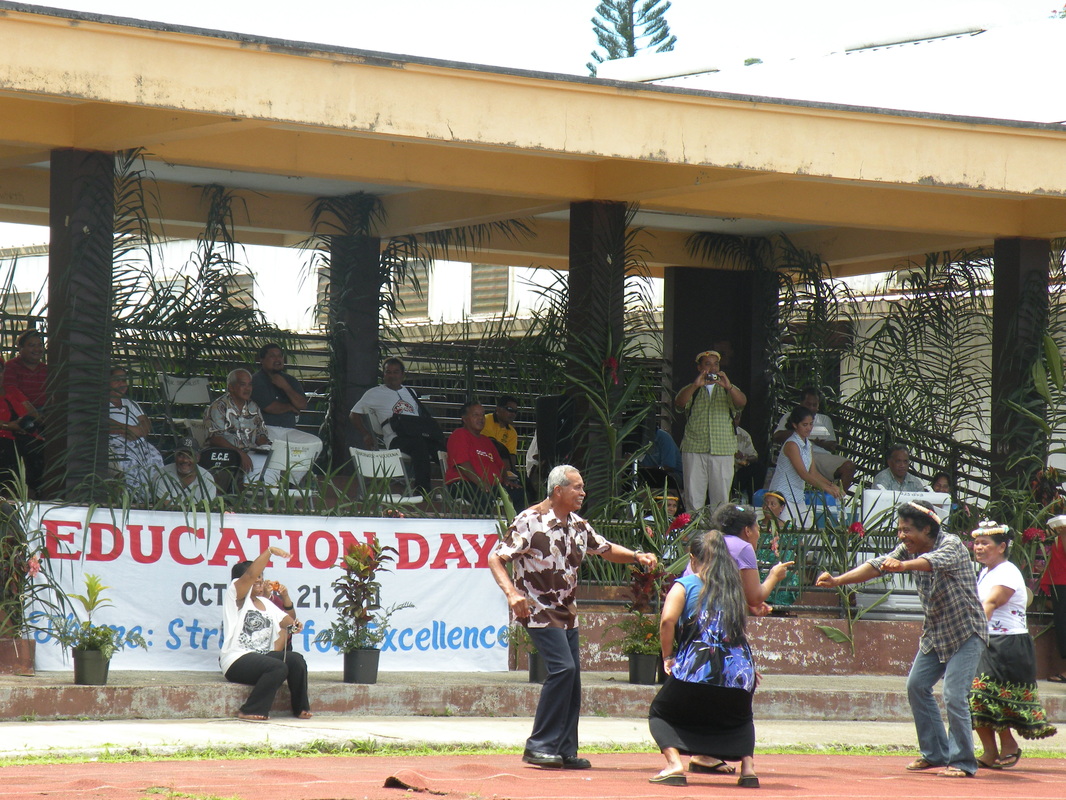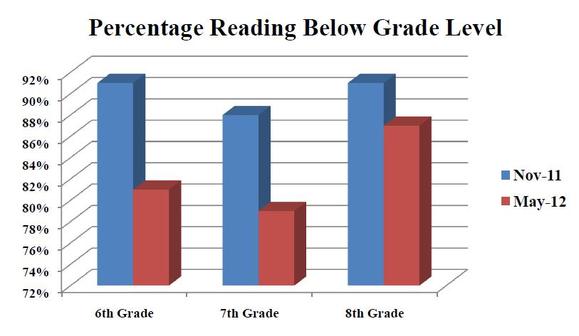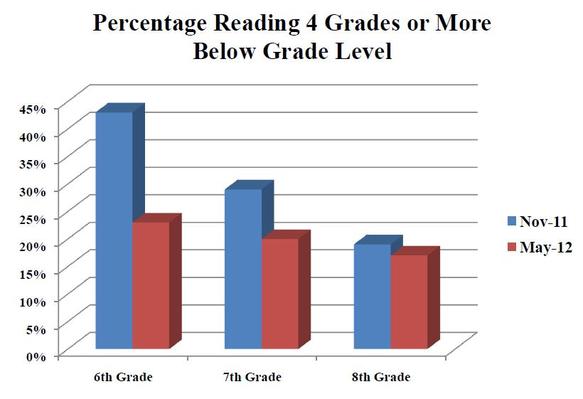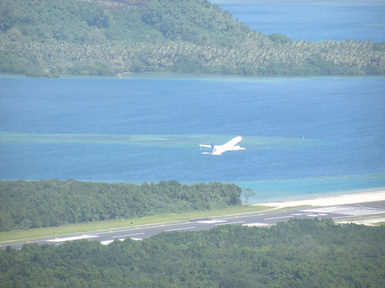 Shot from Sokehs Ridge of liftoff at Pohnpei International Airport Quick disclaimer: this post is going to involve a fair amount of cheese, so you might want to go get some wine and crackers. Bad joke, my apologies. Anyways --- I can’t believe it, but the day is finally here for me to say goodbye to these islands, at least for now. The past few weeks I have been asked often how I feel about leaving. The best and only word to describe it is bittersweet. While I am very excited to see family and friends, and I’m not exactly dreading taking my first hot shower in eight months or watching the Yankees, there are so many things that I am going to miss about Pohnpei.
For starters, look at my backyard:
How do you beat that? I truly have been aesthetically spoiled here. Every day I get to see postcard views – a privilege I have tried not to take for granted. More than just the images associated with an “island paradise,” I’m going to miss the work I have been doing here. Despite the challenges, (if you have read a word of my blog you know what I’m referring to) it has been extraordinarily rewarding work. Working every day alongside others with a shared purpose has been truly awesome, in every sense of the word. Quick side note: our iPad grant has become official – so a major Pohnpeian “Kalanghan” (Thank You) to AUSTRALIA!!! Thanks to the folks down under, MAHI International has received a grant for a little over $20,000 to purchase 40 iPads and rugged carrying cases! I’m also going to miss the slower pace here and the more relaxed approach to life. While there are some negatives to “island time,” it has been gratifying to escape the high-stress world that spawned the 24/7 news cycle. You would be amazed how simple life can be, and how much easier it is to connect with yourself and others, when you aren’t constantly distracted by the bells and whistles of modern America. As I mentioned in my last post, I am going to miss the incredible randomness of Pohnpei. Every day is an adventure where I might witness something I have never seen before. Pohnpei comes with many surprises, both good and bad. It wasn’t always fun when the power went out for hours, but where else in the world can you see a four-door sedan raking a softball field? I think American culture has indoctrinated most people to love routine – no one likes change of any sort. Just think of how the general public reacts when a road is shut down for construction or if the Facebook format is altered. People flip. I have learned here more patience than I thought was humanly possible and with that the mentality to just roll with the punches. There are gems in the unexpected, not just headaches. More than anything though, by a long shot, what I am going to miss most about Pohnpei is the people. The friendships and mentors I have gained here have truly been life-changing. I can’t put into words how blessed I feel to have had the opportunity to work alongside with people like John, Mr. B and many others. This island will forever be linked with these people and for that Pohnpei will always have a special place in my heart. I have no idea who reads this blog, but I’ve accumulated a sizable following somehow. While I don’t know who you are, I want to take a moment and encourage anyone reading this to take the opportunity to get out and serve. And if at all possible, get out of your comfort zone. I of course would recommend MAHI International as a great organization to volunteer for. Currently we are looking for more English instructors to expand our program next year! This has been one of the most challenging, but also one of the most rewarding experiences in my life. Whether you can make it out to Pohnpei or not, get off the couch and go do something. I guarantee you won’t regret it. This experience has been an adventure. It really is difficult to put everything into perspective at the moment. I’m sure though that I will look back at my time in Micronesia with fond memories, recalling the joys, the trials, everything I learned, our successful program, and most importantly the people that made this tiny island in the Pacific my second home. So Pohnpei, Kalanghan and Senek Pwurodo! (Till I see you again!) Drew P.S. Despite my leaving Pohnpei, I still plan to keep this blog going for at least another month or so. In my reading of different long-term volunteer abroad blogs before I came to Pohnpei, I couldn’t find one that talked about reverse culture shock and re-adapting to one’s former world. I also have learned from past trips and experiences that most of the time you learn the most from a trip or experience not during that period of time, but after. I look forward to learning more and sharing what I have learned in the weeks ahead once I am back in part of the world that most people actually knows exists! Also, I have been asked many times, “What’s next?” I have an answer and I’ll leave that to a future post. For those of you who STILL need reminding of where the heck Pohnpei is, check out this map of my flight home. The island hopper plane will be making stops in Kwajalein and Majuro before crossing the International Dateline heading to Honolulu. After a few hour layover it's to San Francisco, before finally the last leg across the country to the best state in the union, New Jersey (stop laughing). In total, I will be traveling 8233 miles in 24 hours.  One last waterfall jump (for now!) 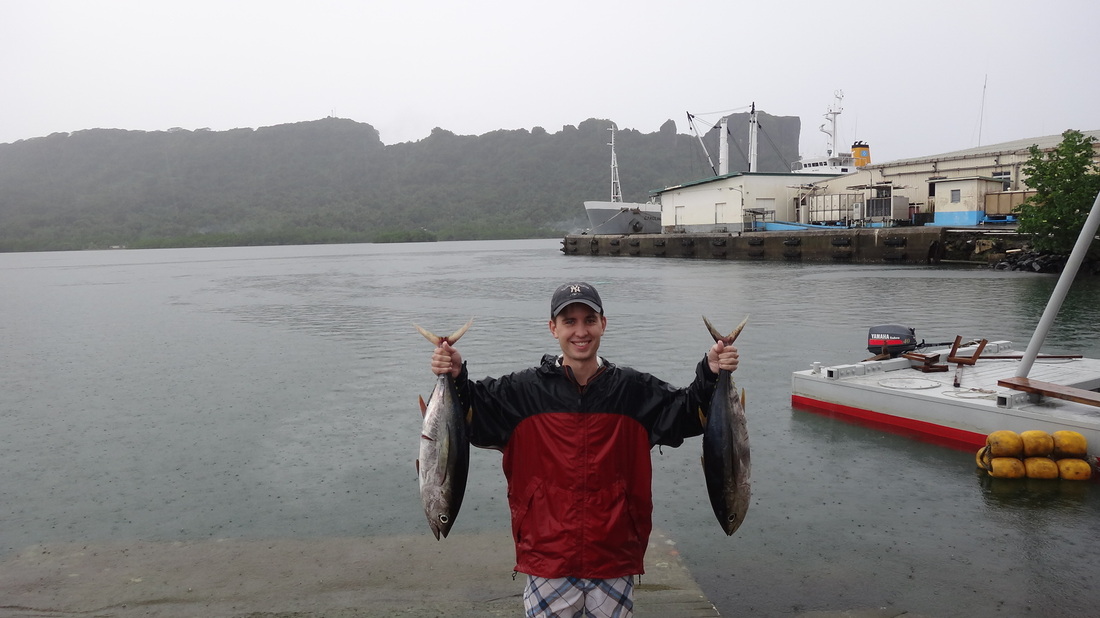 My last day on Pohnpei was a wet one! The series of events went like this out on the ocean: dry heave, vomit, pull a fish, vomit, pull a fish, repeat! I usually don't get seasick but it was worth it! Here's me with a couple of good sized Yellowfin Tuna.
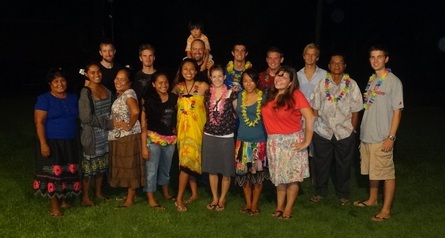 MAHI International and friends at the recent volunteer appreciation dinner _
I have been working on this post since I first arrived in Pohnpei. There were just so many things that were unique and distinct to Pohnpei that I started compiling a list. Every time I thought of posting it I would find something new and crazy, so I decided it was best to post it shortly before my departure.
I would like to say that if you ever plan on coming to Pohnpei, I'd recommend not reading this. Before I came I talked with my friend Alex who introduced me to Pohnpei. I tried to pick his brain to learn as much as I possibly could about this place and I consistently received vague answers. His response was essentially, "You just got to experience it for yourself man." While I might have been slightly frustrated at the time I'm very glad Alex allowed me to discover Pohnpei and all its idiosyncrasies on my own. Even if I did know all of this before I arrived though, I would still have to experience it. For example, I can tell you how there are crazy dogs all over the roads, but it’s entirely different when you have to walk home a mile at night in the pitch dark, navigating through all the dogs and beating off the aggressive ones with a stick.
That said, here’s a little taste of what makes Pohnpei, Pohnpei:
-Locals talk with their face. It’s very difficult to have a conversation with someone without having eye contact. I don’t think I’ve ever heard a local respond to a question with “yes.” Rather, they raise their eyebrows.
-Why did the chicken cross the road in Pohnpei?
a) It was being chased by a naked child with his fingers covered in Kool Aid
b) It was being chased by a pregnant dog
c) It was about to be run over by a beat-up pickup truck
d) It didn’t have a reason – chickens are incredibly stupid animals
e) All of the above
Correct answer: E, all of the above
-98% of all people wear zoris (i.e. flip flops) all the time. The other 2% is cowboy boots. (I'm not counting the few people who just go barefoot.) A trend among many Pohnpeians is the desire to be a cowboy. I find it very amusing every time I see Pohnpeians listening to country music.
 A teacher in one of our adopted schools rocking cowboy boots! -To show the size of something with your hands, you don’t hold your hands a certain distance apart. You put your hand on your arm for the distance of whatever object is from the tips of your fingers. So if you caught a fish a couple feet long, you would put your hand on your opposite arm a couple of feet.
-There is a Facebook epidemic here. Every time I walk into any place with computers, over 95% of the time Facebook is on the screen. The other 5% there’s some sort of computer game. Apparently, before they had Internet, solitaire was the king time drain.
-If Pohnpeians lived in New York City, many would be seriously injured if not killed. What I’m referring to is the Pohnpeian tendency to walk in the middle of the road without a care. Crossing the road? Take your time, what’s the rush? There are hardly any sidewalks anywhere and most roads are narrow as the jungle has creeped in on both sides.
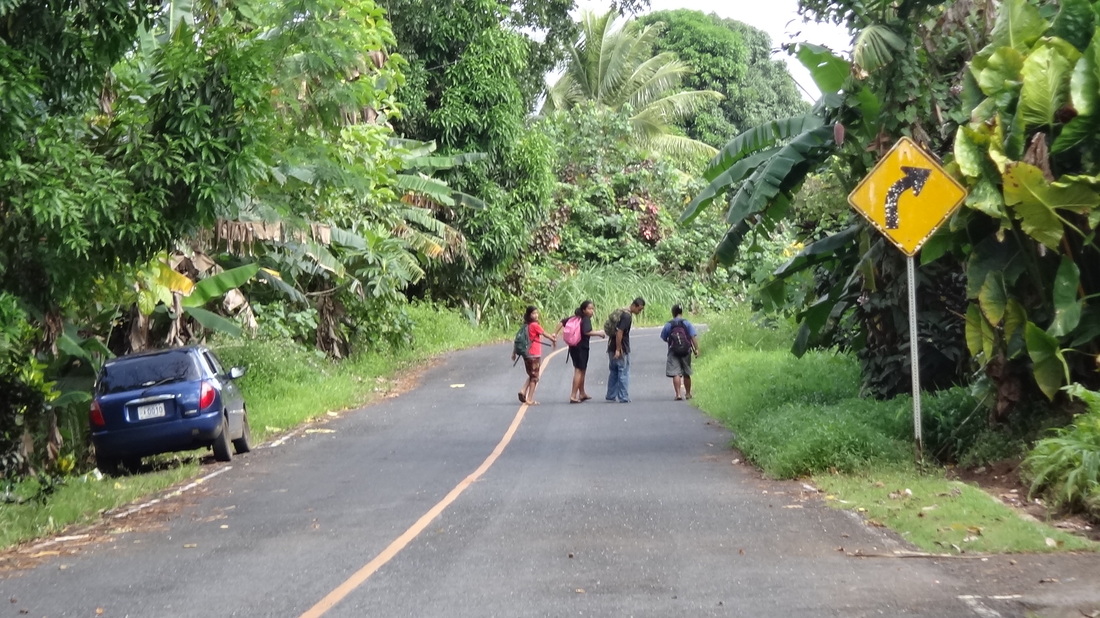 Students walking home using the local path, I mean road -If you ever come to Pohnpei, don’t be surprised or “weirded out” when the locals stare at you and continue staring after you make eye contact with them. First of all, you’re a “menwie” (men-why), i.e. a foreigner, so you don’t exactly fit in around here. Sometimes I feel like I should get that t-shirt that says “Keep Staring, I Might Do A Trick.” I got used to it pretty quickly though.
-You don’t need to iron clothes in Pohnpei. It’s so humid, no matter how wrinkled your clothes are, if you spray some water on them, the wrinkles will come out within 10 minutes or so.
-The multiple hairstyles here are awesome! Pohnpeians can rock the craziest hairstyles, I love it. I have multiple pictures to back up this claim, but here’s a couple:
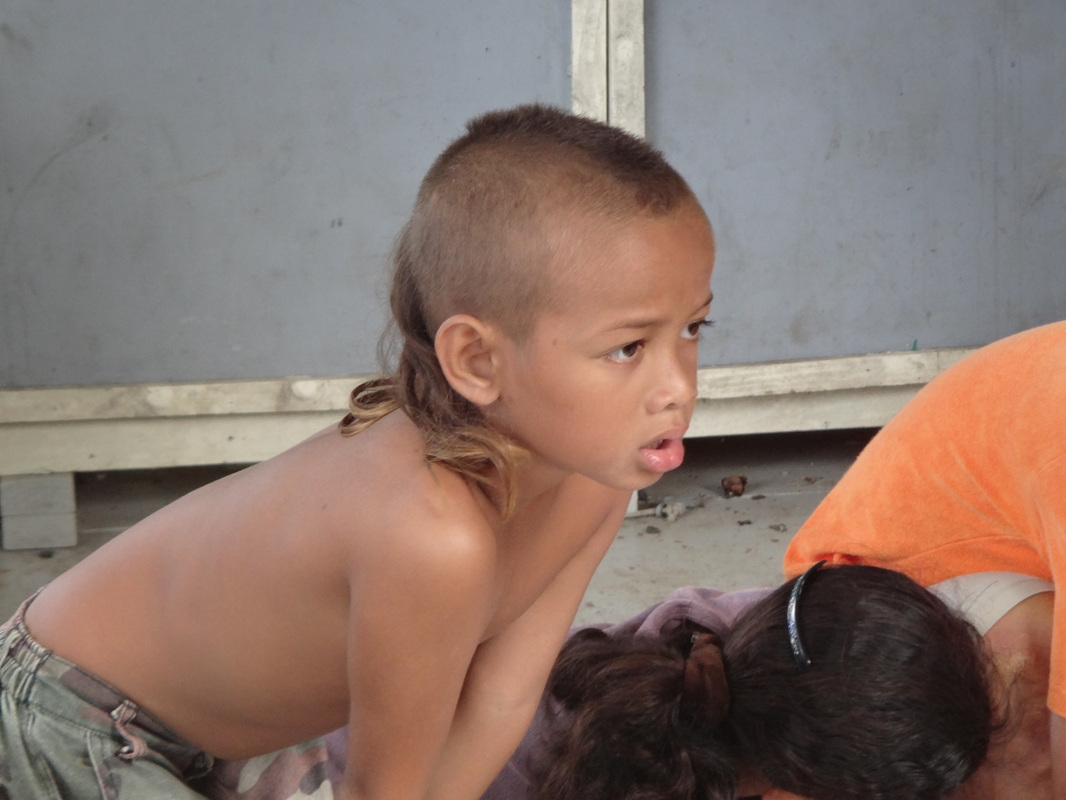 Slight mohawk with a mullet twist. Classic. _-It’s not unusual to see a male, at any age, taking a leak on the side of the road, at any time of the day. (Sorry, I don't have any pictures of this!)
-I’m willing to bet that around half of the cars on Pohnpei wouldn’t pass a general vehicle inspection in the States. Some cases are more obvious than others!
-Abandoned cars litter the roads all over the island. Most of the time these vehicles become part of the jungle environment as plants start growing in and around them. Occasionally, like in a picture below, the cars are taken away by a recycling facility here. In addition to cars, the Kolonia harbor is also littered with abandoned ships. All of it contributes to what makes Pohnpei, Pohnpei.
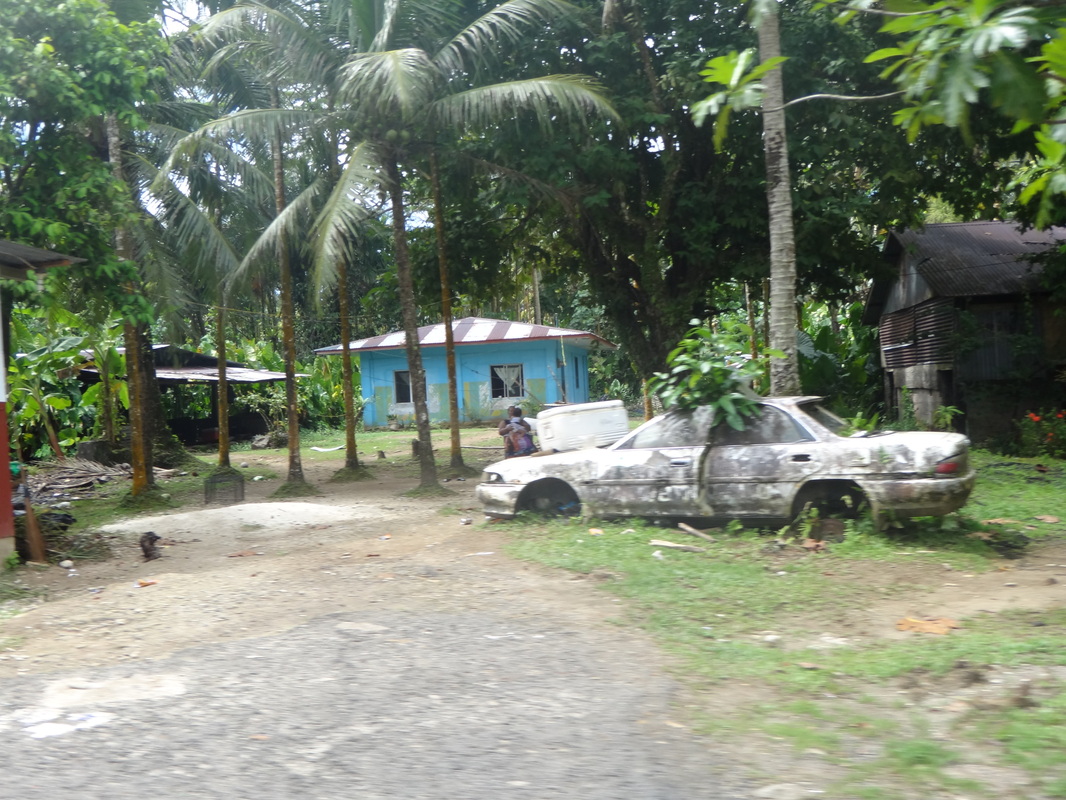 You can see a tree clearly growing directly in the car here! 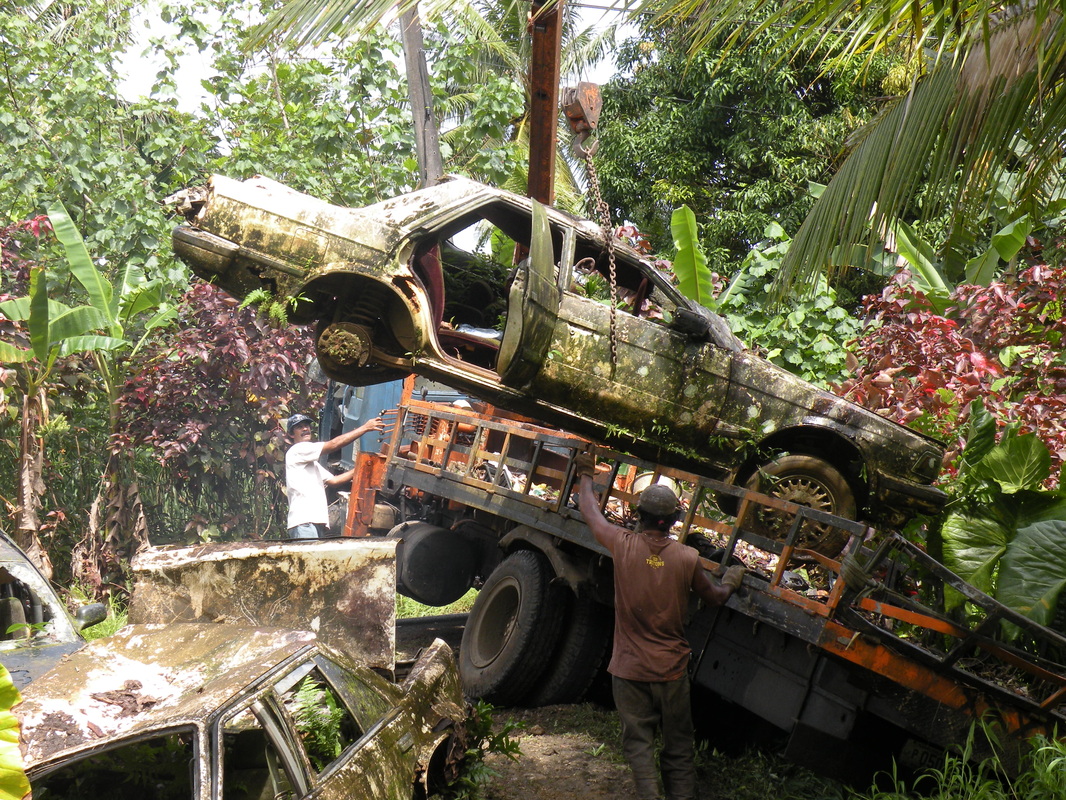 We had some cars moved that were close to our property - you don't see this every day! -It is perfectly acceptable and appropriate to spit at any place or time, regardless of age or gender.
-Occasionally when driving along the road you smell the strong odor of burnt hair. It’s rather gross. It’s actually not the smell of burning hair, it’s the cooking of turtle.
-Many guys wear female clothing and accessories, not knowing they’re associated as girly things. I’ve seen guys wear female rings, earrings and paint their nails. The funniest part is it’s usually the guys who are going for the “tough guy” image that make this mistake!
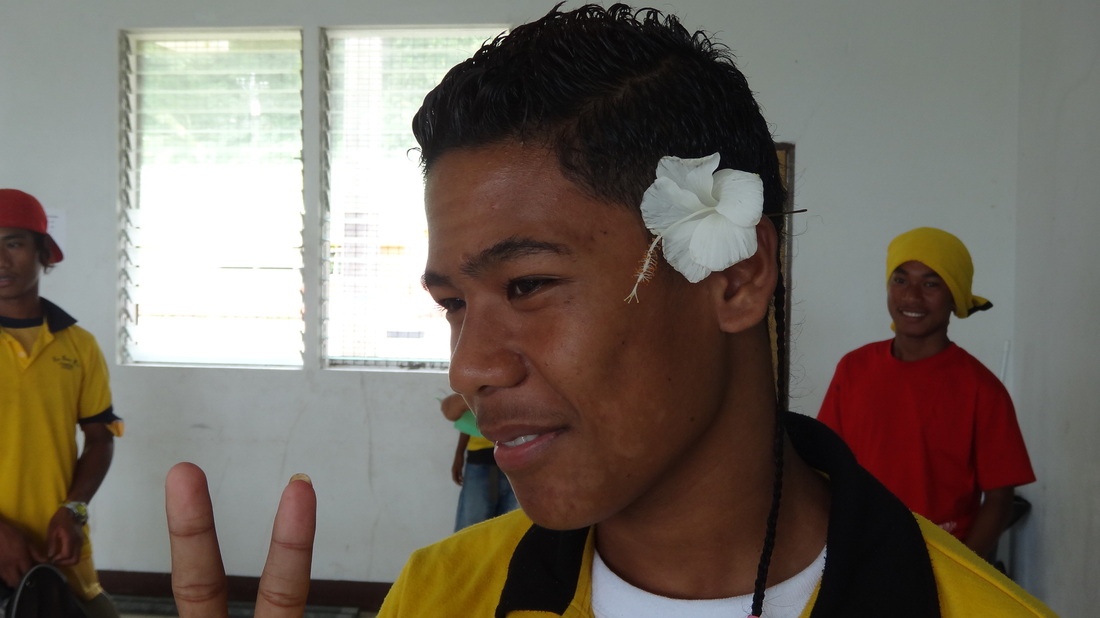 One of our students rocking the flower over the ear _-Every day on the road I see doors of moving cars open, whether passenger or driver (sometimes both at the same time!). The person then sticks his/her head out and spits a giant stream of red juice onto the road. These people are chewing betelnut – a local nut that is combined with lime and cigarettes. An extremely addictive habit, many locals are constantly chewing betelnut. As a result, the roads, parking lots and sidewalks are littered with red stains.
-The 100m world record will likely never be held by a Micronesian. The 100m while in flip flops world record, would most definitely be held by a Micronesian.
-You don’t go more than a couple hundred yards on any road in Pohnpei without seeing an animal. Literally, I’ve tested this. Most of the time its chickens, dogs and cats, but every now and then pigs, goats and ducks come out to play. 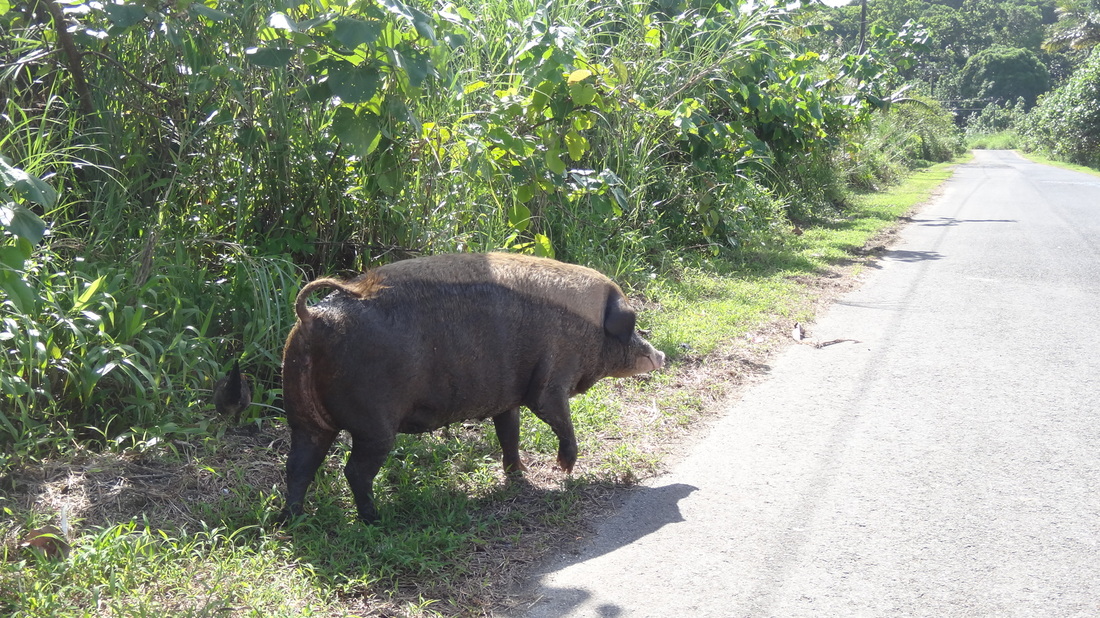 The most common animal found on the roads are dogs, but here's a rather large pig, along with a chicken in the brush to the left of the pig. _-Pohnpei has something that brings me back home to New Jersey – you can’t pump your own gas. The world really would be a better place with more Petroleum Distribution Engineers!
-When Micronesians get new appliances or electronics, they don’t take the plastic coverings off, ever. By keeping the plastic on a stove or printer for example, others think you have new things, which Micronesians find appealing.
-Why on earth many young Pohnpeians wear beanies is beyond me.
-While you drive on the right side of the road, cars are from both the US and Japan, so some cars have the steering wheel on the left, while others are on the right. I've driven cars with the steering wheel on the right and it takes a little bit of getting used to - everything is the opposite. I hope I didn't look too stupid when I put the windshield wipers on instead of the turn signal!
-Bob Barker would not be happy with this place.
-Many Pohnpeians have interpreted “backpack” to mean “chestpack,” wearing a backpack on the front instead of the back. It looks a little silly if you ask me.
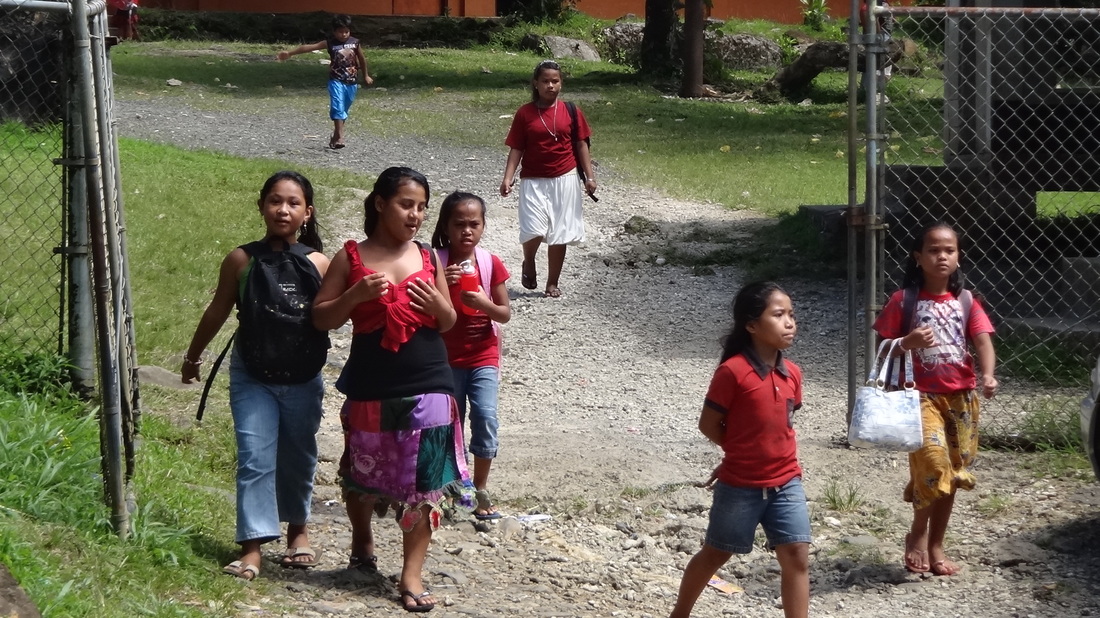 A girl rocking the chestpack on the left -Having to set the clock multiple times every day is just a normal part of Pohnpei life thanks to the frequent power outages.
-It’s not uncommon to come back to your car and people to be leaning or sitting on it. I always wondered what it would be like to bring some Micronesians to the US. If you’re caught leaning against someone’s car in the States you might get your head blown off.
-There is a high degree of copyright infringement here in Pohnpei. Here’s a short sample: Wall Mart, Cost Go, and South Park Hotel
-Despite being one of the rainiest places on earth, only on a handful of occasions have I ever seen a Pohnpeian carrying or using an umbrella. No matter how hard it’s raining there are always locals walking around like it’s a beautiful, sunny day.
-Speaking of rain, the phrase “when it rains, it pours” must have originated in Pohnpei. Hardly ever does it just drizzle in Pohnpei – most of the time it’s an absolute downpour.
-There's no limit to how many Pohnpeians can fit into the back of a pickup truck. It's hard to count when they drive by fast, but it's fair to say that I've seen pickups with at least ten people in the back.
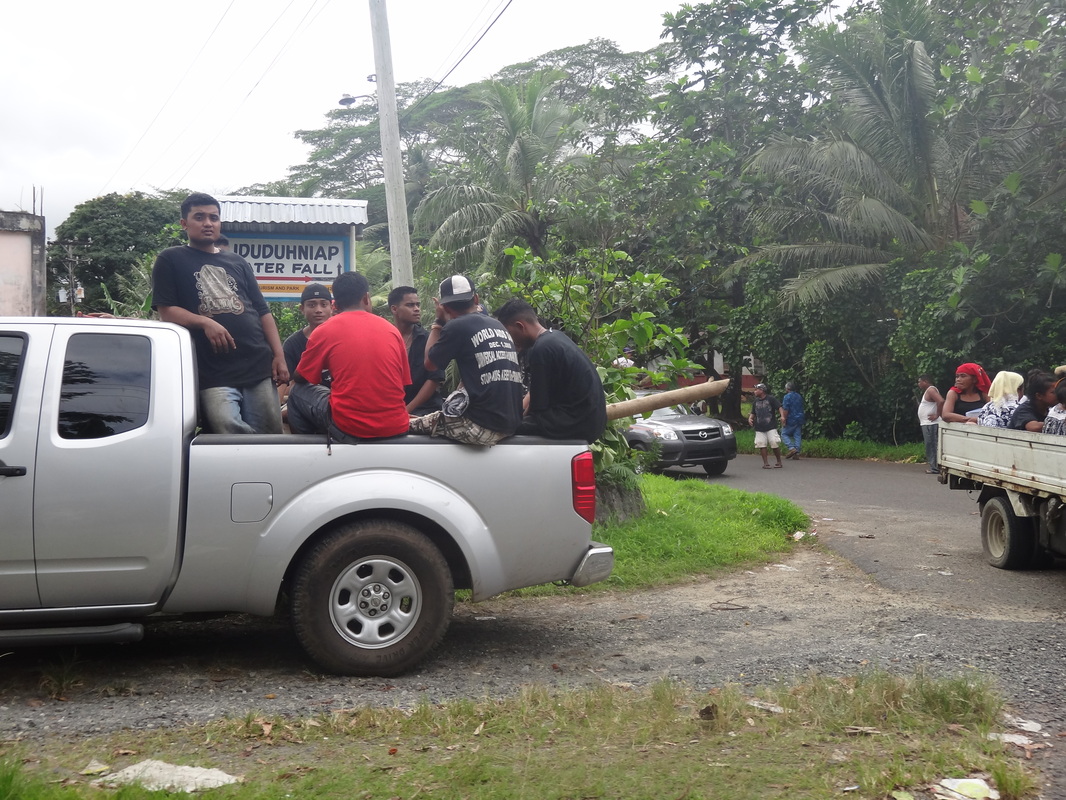 This is only a glimpse at how many people can fit in the back of a pickup. This truck has a big yam inside so that's taking up a lot of space. It's not fully shown, but the truck on the right is a more accurate representation of how many people can be squeezed into the small space. _-It’s not unusual to see two people walking down the street holding hands regardless of gender. If it is a male-female duo, they are not “together” – they are just friends or maybe brother/sister or cousins. The same goes for male-male or female-female. As a relatively conservative country it would be considered very inappropriate to publicly express solidarity in a homosexual relationship or even in a heterosexual relationship.
-Pohnpeian “billboards” aren’t exactly kid-friendly!
So there's my list. I'm sure if I stayed longer I would find new things to add to the list and I'm also sure there are plenty of other things those who have been in Pohnpei with me have noticed that I missed. But I hope this list gives you a slight taste of what makes Pohnpei such a crazy place - and I mean that in a good way! Below are some pictures that I have taken over the course of my service here that are just so incredibly random! I love walking out the door here and never knowing what I'm going to see. I'm going to miss that. Too much of the same is plain boring.
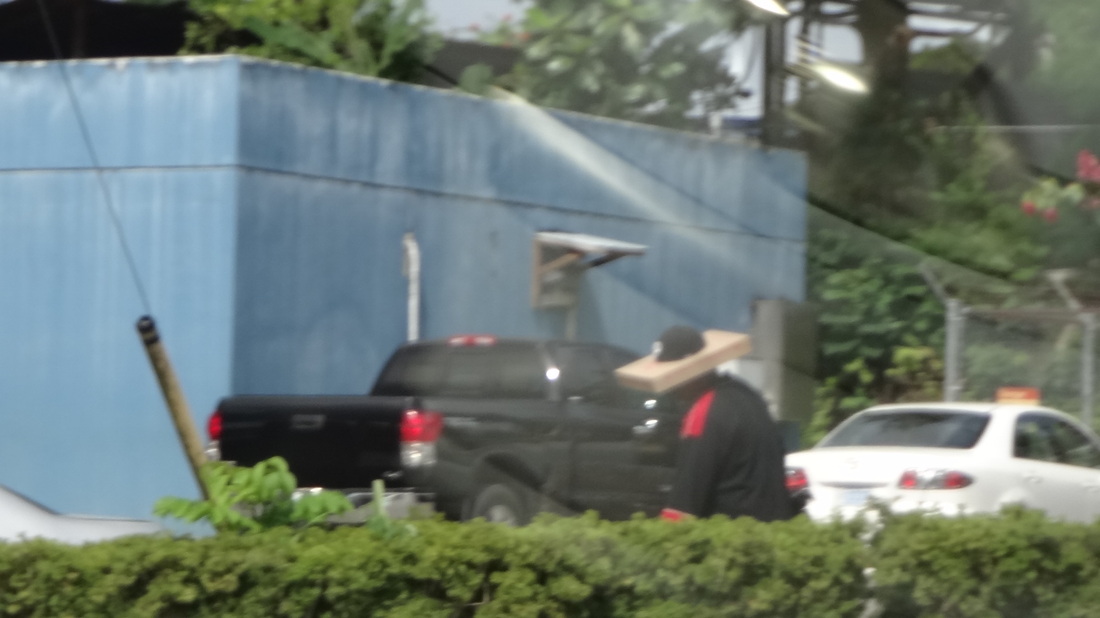 I call this the "Box Hat." This guy is trimming the bushes and found an innovative use for a pizza box to get some extra shade! 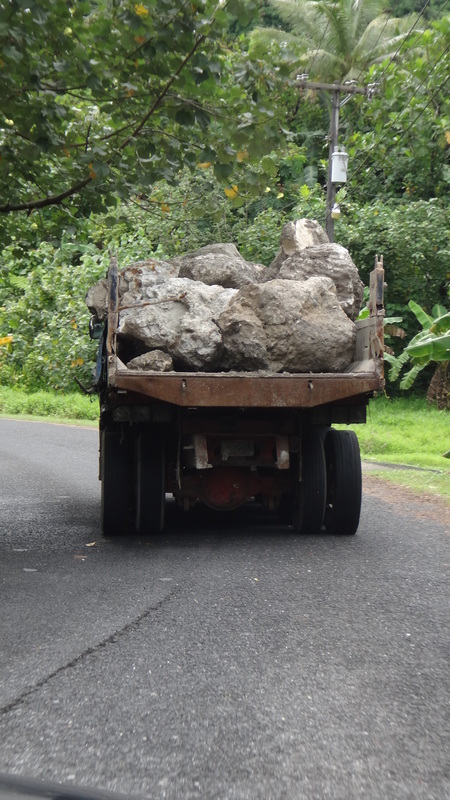 Mr. B and I were driving to Pohnlangas Elementary School and were stuck behind this truck for a good while. You can't tell from the picture, but a couple of those rocks were tipping whenever the truck hit a bump. This was just a little sketchy. If one of the rocks managed to roll out Mr. B and I would have been squashed. 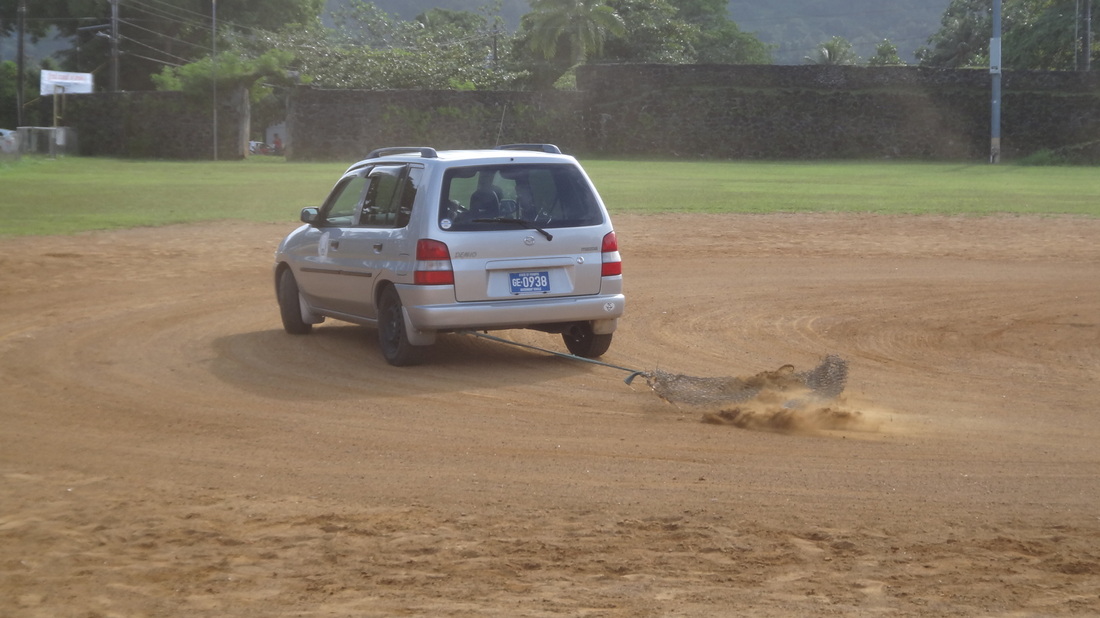 I LOVE this picture, and took it just the other day. I call this "Pohnpeian Groundskeeping." This is at the local softball field in downtown Kolonia. That is a government vehicle raking the field. Incredibly random, incredibly Pohnpeian! 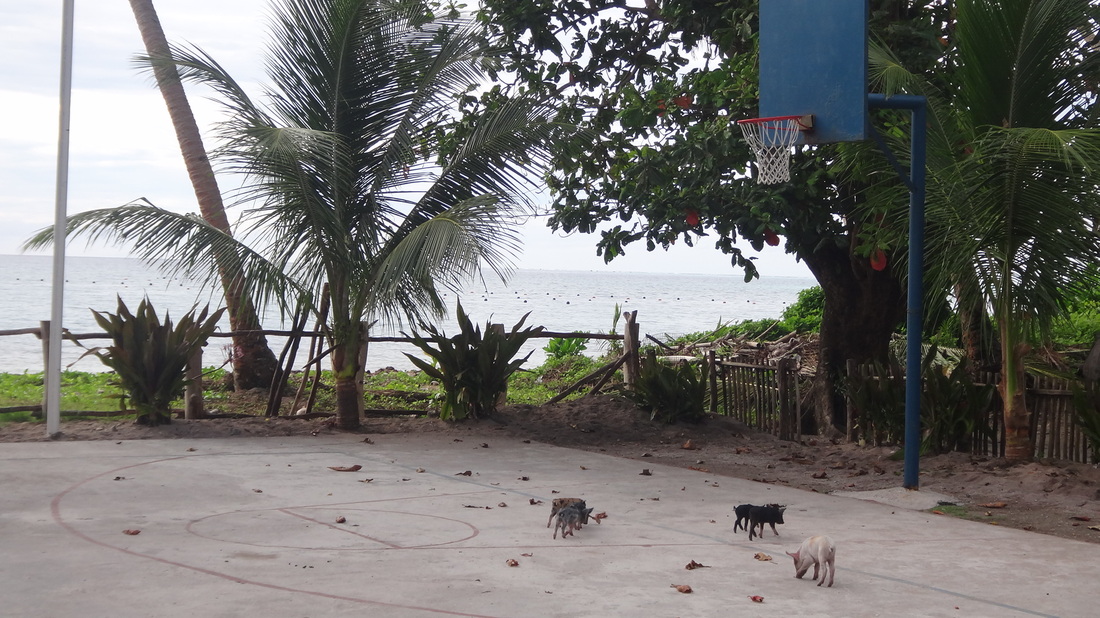 This is at Pakin, where I mentioned in my last post there are more pigs than people. Here are some piglets hanging out on the basketball court. This picture above says SO much. Here - read the story behind it.  Think you'd ever see this in the States? Here's a man outside a funeral walking with a leg of pig. An image that will forever remain in my head, that I failed to capture with my camera, is a ten-year old boy lugging a pig head on his shoulder. Crazy. 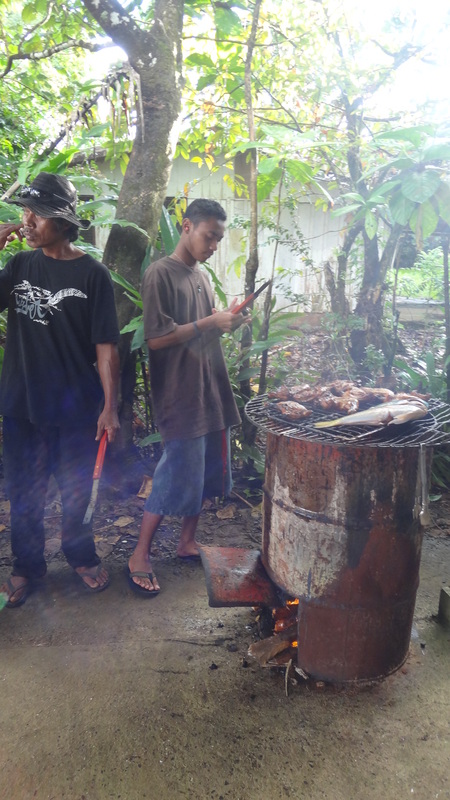 This is a Pohnpeian BBQ. It works very well. A cleaned-out 55 gallon drum with a little welding work to cut out a whole to feed the fire.  Colorful reef fish alongside chicken
It's hard to believe but I have less than a week left in Pohnpei. While I'm looking forward to seeing friends and family, I'm going to miss this place incredibly - in large part due to living in a place that is so unique, as evidenced by everything above. I'll leave the rest of these thoughts until my next post.
 Completed solar panel unit on Pakin Atoll __ This time last year I was graduating from college, reflecting on how much I had learned and grown over the previous four years. I was still hearing people say “Microwhat?” when introducing my plans for the future, but I was excited for my next adventure. A long summer later and I was in Pohnpei. It hasn’t really sunk in yet, but I only have a little over a week left in Pohnpei. While reality will soon smack me in the face, I have been reflecting again on how much I have learned and grown over the past year. In the midst of this reflection, I realized that in a way, I’m “graduating” from Pohnpei. Let me explain. When I first talked to John, the Executive Director of MAHI International, about volunteering in Pohnpei, I was first introduced to the solar project on Pakin Atoll, an outer island approximately 30 miles from Pohnpei. I researched grants and started fundraising for the project, excited at the prospect of transforming the life of the residents of Pakin, who have never lived with power on their island. While things changed and I shifted my focus to education here on Pohnpei, I was always excited at the prospect of contributing to this project in any way I could. I’m happy to report this past week we installed 16 solar panel units on the school roof in Pakin! This power will be used primarily for an ice machine and freezer which will revolutionize the economy of the island as the main source of income is fishing. There is a lot of extra power as well which is exciting as it might lead to future projects such as a computer lab for the school. On Pakin I also had the chance to help with health screenings of the islanders, assisting Ben, a doctor who is volunteering for MAHI International. There are about 60 people living on Pakin, a number which inflates during the summer months when high school students return from Pohnpei. We screened 40 adults and were able to educate them about many health issues about everything from quitting smoking to diabetes. Life on Pakin is a different world. One thing is for sure, most of my city friends wouldn’t be too comfortable. There are more pigs than people, no running water, and if you want to eat dinner it’s a plate of rice unless you get in the ocean and catch a fish. Many people see pictures of places this and wish they could live on a beautiful island paradise. While it is absolutely gorgeous many overlook how tough island life actually is. I have a tremendous amount of respect for these people on the outer islands and their incredible toughness. Once we got back from Pakin it was back to the grind. I was really excited for Friday morning when we had a meeting with an embassy here regarding a certain grant application. Back in December I wrote a grant to receive 16 iPads for our education program. We heard very positive feedback from this embassy after a long delay and re-writing the grant for 40 iPads, with the assistance of Ap, the Peace Corps volunteer on Pakin. We were a little worried however when they asked to meet regarding our application. We were able to get our hands on an iPad on island and showed them an application we plan to use and answered all their concerns. The grant was re-submitted with the very minor additions and the grant is all but set in stone (as it isn’t set in stone, I have not mentioned the embassy – once it is I will heap praise on their awesome nation!). When John, Ap, and I walked out of the meeting, it was then I started thinking about how I’m “graduating” from Pohnpei. We have worked tirelessly to receive these iPads and it’s becoming a reality! Any college student, past or present, can recall the intense satisfaction one feels after submitting all their work or finishing that last exam to finish a school year. I felt a similar feeling when we realized the iPads are actually coming – a long period (over a semester long this time!) of work, dedication, and persistence culminating in a moment of where we could revel in our achievement. These iPads aren’t the final answer – there is no silver bullet – but this tool will be an incredible addition to our education program. Speaking of graduation, this is our last week in the schools. While I’m sad to leave our students I’m very pleased with the progress made this year, especially amidst our limited resources. As I reflect on all that MAHI International has accomplished during my time here, I will be very proud of the solar project on Pakin and our acquisition of the iPads, but I will be most proud of our student’s increased English proficiency. I’ll let the graphs below speak for themselves. In the fun department throughout this past week, my roommate Ian and I were able to snorkel on the reef next to Pakin. No picture or video could capture the beauty of this place. You snorkel in water about five feet deep along the reef, then boom! – a drop down into the ocean so far you can’t see the bottom. The blue is the most vivid color I have ever seen and there are fish with the most vibrant and striking colors swimming everywhere. I felt like I was in an aquarium. I know what most mothers, including my own, are thinking at this point – where are the sharks?!? Yes, we stumbled across some. When there was just one shark, maybe four feet or so long, it caught our attention but we were more interested in observing it than feeling any sense of fear. When there was two of them we backed off a little bit, but continued about our merry snorkeling way. When the third shark showed up, this time maybe five feet, we stopped moving around and decided to stop diving down for the time being. Only a little bit later when the fourth and decidedly biggest shark arrived it was time to take a break and hang out on the reef! I might be willing to take some risks by entering shark infested waters, but I’m not crazy! This past weekend I was also able to visit Kepirohi Waterfall, which is likely the most breathtaking waterfall I’ve seen on Pohnpei just from the sheer size of it (pictures and video below!). While you can’t jump off it due to the lack of depth at the bottom, there is a place you can sit underneath the falls. It was incredibly loud but really fun to be on the other side of the tumbling water. It was also especially beautiful thanks to the 6.5” of rain we received in one day (5/18) a couple days prior. Just FYI – my next post I have been working on since the day I arrived on Pohnpei. You won’t want to miss it!
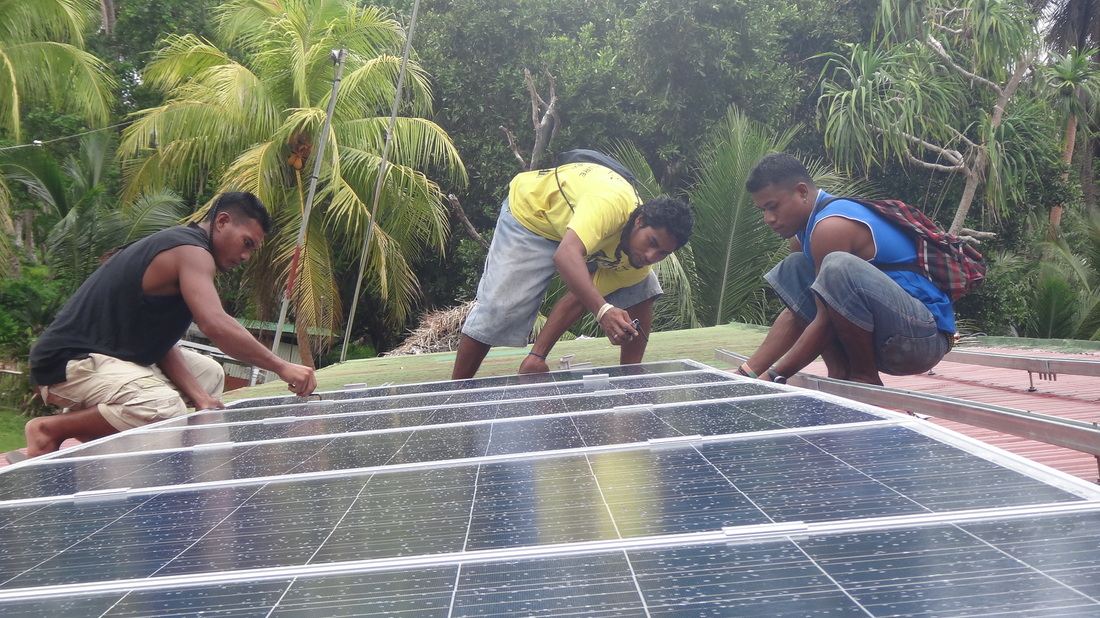 Locals helping install solar panels on Pakin Atoll  Pakin man with an epic beard looking out over the lagoon 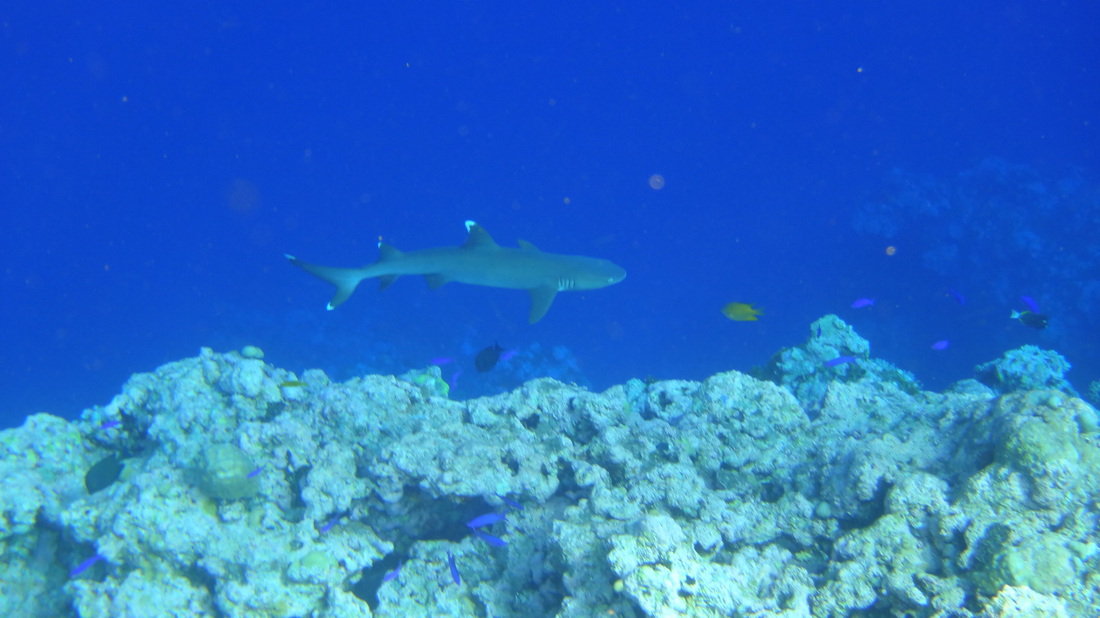 Hello there, friend 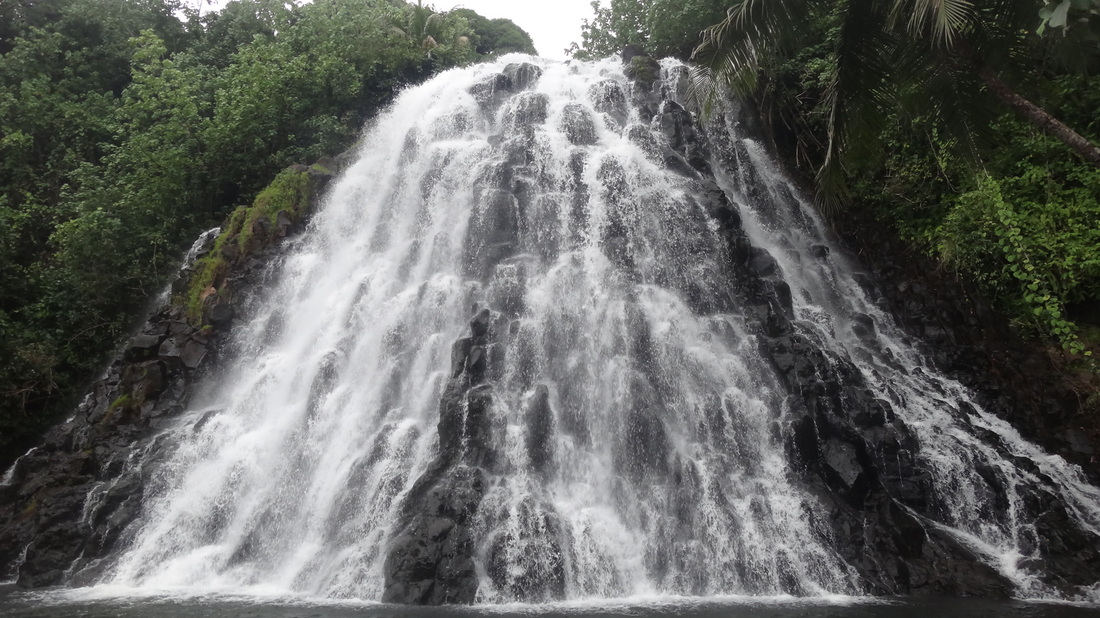 Picturesque Kepirohi (pronounced Kep-roy) Waterfall  Can you see me under there?
 My roommate Ian and I conducting student reading level assessments _ One of the many reasons I came to Pohnpei was to learn more about service. I wanted to learn what service is all about – what motivates people to serve, how to successfully serve others, and what role service should have in my life. While I still have plenty to learn, my time in Pohnpei has left an indelible mark on how I define service. I was introduced to service at a young age through scouting. In Boy Scouts I mostly did things like clean up roads and hiking trails and collect cans for food pantries. Throughout college I was too busy most of the time for service. I regret not making time for it, but I did have the opportunity to travel to New Orleans and work on building houses for a week over spring break my senior year. These experiences left me mostly confused about service. I knew that it was a “good” thing to do, and while I enjoyed helping others I felt that I really didn’t understand service. I can’t really put my finger on exactly why – I just knew I was missing something. This left a nagging feeling inside me. I had the inkling to work with MAHI International ever since I met my good friend Alex freshman year, who introduced me to the organization. After spending eight months in the “real world,” working at two internships in Washington, DC over my Junior year and ensuing summer, I knew that I wanted to delay entering the workforce for a year. I had been in conversations with John, the Executive Director of MAHI International, since my sophomore year and my inkling to serve turned into a commitment. Everyone has heard the extremely true cliché that you learn more by experiences than in a classroom. I knew that coming to serve here in Pohnpei would be a memorable and valuable learning experience. Boy, was I right! At first, serving here didn’t feel any different than normal work. I had a job to do and I strove to do it well like always. After about a month though, I really started to learn what service is all about. As I have detailed extensively throughout this blog, working in Pohnpei is not without obstacles (big understatement there). I found these never ending roadblocks were especially frustrating when serving. Our mission is to make a difference and to ultimately help the people. When your opportunity to succeed is impeded it’s frustrating no matter what the circumstance, but is especially so when you are investing your time, energy, resources and heart into a mission. While I found the roadblocks frustrating, what drove me most crazy was the overall lack of urgency rampant throughout the island. Many times I felt like I was running through quicksand. Throughout this learning experience I really looked up to those who have dedicated their life to serving here. I leaned on bits of wisdom, like “making things funny” from Mr. B and spent hours talking with John also trying to access all the wisdom he has accrued throughout his time here. One conversation in particular though sticks out and I will never forget. In early December Mr. B and I were eating lunch between our visits to the schools. We have spent a ton of time together in all our drives around the island and I have enjoyed immensely hearing all of his stories and learning from him. A little background – Mr. B has been involved in education on Pohnpei for 35+ years, with 19 of those years as the principal of the SDA School. Mr. B is also by far the most selfless person I have ever met. I really wanted to get at the heart of what drove him to work so hard when facing so many challenges in attempts to grasp how to cultivate servant leadership in others. His answer was deep, eloquent, and shockingly simple – you love. I don’t want to get all cheesy but this really hit home. Most people just talk about their work and accomplishments. You can talk a big game but at the end of the day it’s all just hot air. Mr. B on the other hand is a doer. There’s something beautiful about hearing pure and utter truth spoken by someone who not only speaks it, but has lived it every day his whole life and still does. I can’t think of a better way to learn about service than working side by side with people like Mr. B who embody service in every sense of the word. So what is service all about? It’s about love. People who are truly motivated by loving others are the ones who make a difference as they are armed with the strength to overcome any obstacle. I can’t write about this without mentioning where this love comes from. MAHI International is a “Christian-driven” organization. Our work isn’t about evangelizing, but after spending so much time with the people who make up MAHI, it is crystal clear that our collective inspiration is coming from something greater than ourselves. While no one here is Jesus, it has been awesome to be around people so impacted by their faith and knowing Christ in their heart that Jesus seeps through them. After I leave these islands I intend to continue serving. Sure, this will mean doing typical “service” things like volunteer work. After spending so long engulfed in service though, I hope to have opportunities to serve others every day through my daily interactions. While my time in these islands is coming to an end, everything I have learned, including the lifestyle of service I have adopted, will continue to guide me for the rest of my life. All that said, my time here is not over! This past week we were in the schools conducting student reading assessments in attempts to see their progress since we first assessed them in October and November. The results are not complete yet, but I’m happy to report that overall we have seen major progress! Also, I’m very excited that this coming week I’m going to the outer island of Pakin for a few days. Just for a point of reference, Pakin is about a two-hour boat ride from Pohnpei if the weather is good. The main mission is to install solar panels, but I’m also going to be helping with health screenings and teaching in the small school there. Life on the outer islands is a completely different world so I’m excited for the cultural experience. In the fun department, this past Thursday was FSM Constitutional day, so my roommate Stephane and I took the holiday to hike Sokehs Rock (the big rock in the banner on the top of this page) and camp there. It’s always a spectacular view up there and the sunset, night sky, and sunrise were well worth the trip. We were very fortunate to have a clear night – the horizon was so clear it was hard to distinguish the flashing lights of boats on the water from the stars in the sky. It was also nice we didn’t get rained on! A few pictures are posted below!
 My favorite picture from Pohnpei so far - Mr. B and I standing in front of "the Green Machine" - i.e. the education program's car, used to take us from school to school 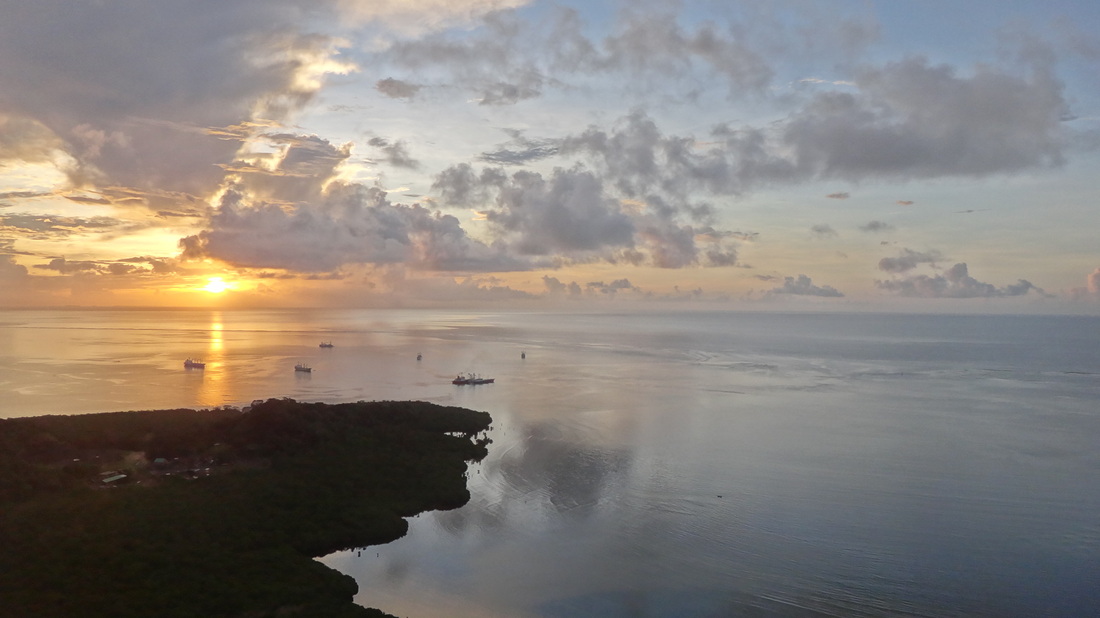 Sunset from atop Sokehs Rock  Good morning, Pohnpei International Airport!
 Students working on grammar worksheets at ESDM Elementary School _ It’s hard to believe, but we are winding up our education program for this school year. In the past few weeks we have focused on the 8th graders as they have their big high school entrance exam this coming Friday. We will spend another week working with our 6th and 7th graders before calling it a year. History shows that once you get to mid-May the schools here are pretty much checked out, infatuated with practicing for graduation ceremonies which are a huge deal. Picture the scene – spending weeks preparing for a ceremony to celebrate the accomplishments of graduating 8th graders – when many of them are reading at a 3rd grade level or below. Frustrate you a bit? Remember – if you don’t make things funny, you will get a heart attack. As we are approaching the end of our program this school year we have been reflecting on what went right, and what we want to do differently in the future. I’ll address the latter first. Originally, MAHI International planned to only have one or two schools in our program, focusing on truly making a difference there. When we brought our plan to the Department of Education last August, they implored us to take on seven schools, all of which were among the poorest performing and had new principals. After two months we dropped two schools due to a lack of support on their part for our program. When we gave our initial report on the state of the schools and the lackluster (to put it mildly) reading level amongst the students, we received negative feedback for dropping the two schools. The logic was “adding is positive and subtracting is negative.” We tried explaining how all we had was Mr. B, myself, a car, and a modest budget for fuel and copies. As a result, we argued it would be best for us to concentrate our resources to make a deeper impact. Some understood, some did not. About a month and a half ago, we dropped another one of our schools after a consistent lack of support. More than once we rolled up to the school and found no students there, and once we were in the middle of teaching and they rung the bell ending school for the day. Why? The principal had to go to class in the afternoon and the faculty meeting had to happen at 11:00. Here’s the logic – cancel school for 300+ students for the day, so one man can go to class later. Deep breaths now. Remember – make things funny. Believe it or not, that wasn’t the final straw. The school really needs our help so we kept trying, but after continued indifference from the school we had to sever ties. So here we are at four schools, all of which are spread across Pohnpei. While there is significant travel time (our farthest school is about a 75 minute drive through pothole ridden roads), we believe it is important to serve schools far away from Kolonia, as the Kolonia schools are the best and receive the most support. Even now however we are still having trouble with many of our school administrators and teachers not supporting the program. We have come to the conclusion that next year we will focus on two schools, and perhaps only one – choosing schools with principals who wholeheartedly support our program and teachers who see our instruction as an opportunity to learn new material and teaching techniques and not a 30-minute break. Beyond narrowing down our number of schools next year, we are excited at the prospect of receiving 40 iPads to use in the classroom. You might remember our original plan to bring iPads to use in the classroom this year. Without going into the details we applied for a grant to a very receptive organization back in December, and like everything in island life, have waited a long time. Long story short, the prospects are very bright that we will receive the iPads and three protective cases for them shortly! It’s obviously disappointing we weren’t able to use them in the schools this year but we can only move forward now. While I might not be here to witness it, I’m super excited to see pictures of our students with iPads in their hands! As I approach my last month on Pohnpei, I have been reflecting on all the work MAHI International has done as an organization around our education program this year – all the copies made, all the trips Mr. B and I took around the island, all the hours we spent imploring our students to speak in English, and yes, all the hairs we have collectively pulled out of our heads in frustration. I am now forced to ask the question – have we really made a difference? This is a tough question. I’m first forced to look at this analytically – what educational gains have our students made? I can unequivocally state that our program has resulted in widespread gains amongst our students. When we first asked students to write a complete sentence, the majority were dumbfounded. The idea of capitalizing the first letter in every sentence and ending it with a period was completely foreign. We then worked our way to the difference between proper nouns and common nouns, then present tense and past tense, and on and on. We still see sentences starting without a capitalized letter, and “cuz” instead of “because,” but they are now the exception, not the norm. Besides their writing, overall their reading comprehension has significantly progressed, along with their vocabulary and phonics skills. So analytically, the answer is yes, we have made a difference. But part of me wants to look deeper. It’s great that their English is better than it was a few months ago but there are still so many problems and so much room for progress. The question still stands – did we really make a difference? I was talking to my friend Ap a couple days ago, a tremendous Peace Corps volunteer serving on the outer island of Pakin. You might remember very early on in my fundraising last year I was raising money to put solar panels on Pakin. More on the progress of that project in the next post or two. Ap is a teacher at the school there and we got to talking about the progress our students have made. He said something I found very profound, and holds a lot of truth – at the end of the day, education is about faith. You have to believe in something that you can’t see – even if there doesn’t appear to be progress, education is a marathon, not a sprint. Mr. B joined us and reflected on his career in education. Thousands of students passed through his classroom and under his leadership as principal. He explained how he sees his students prospering all over Pohnpei, working in great jobs. He might not have been able to see his influence on graduation day (no matter how lavish the Pohnpeians made the ceremony), but he can undoubtedly see it now. (Although he would be much too humble to acknowledge he did anything extraordinary). Education isn’t like a business where there are indisputable, unambiguous numbers which reveal a company’s level of success. Sure, you can show an increase in test results, higher graduation rates and send more students to college. All of these are measurements of success which hold some validity. Ultimately however, the true impact of education extends far beyond numbers on a page. By entering these classrooms, exposing them to more English and encouraging them to read, work hard and aim higher, I believe we have truly made a difference. I gotta have faith in that.
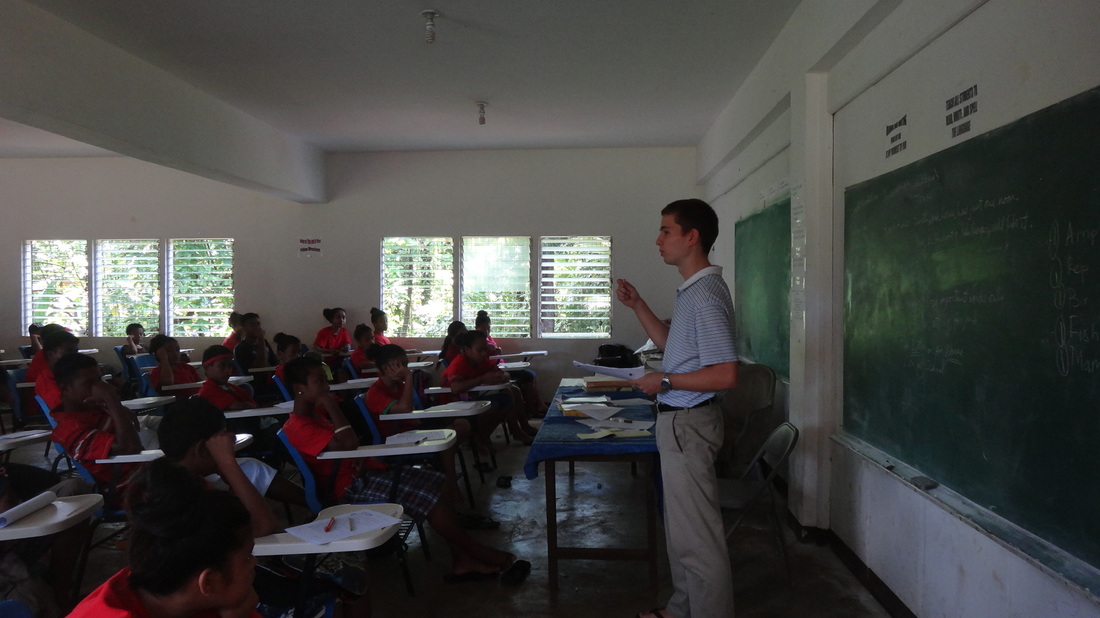
Teaching 8th Grade at Pohnlangas Elementary School
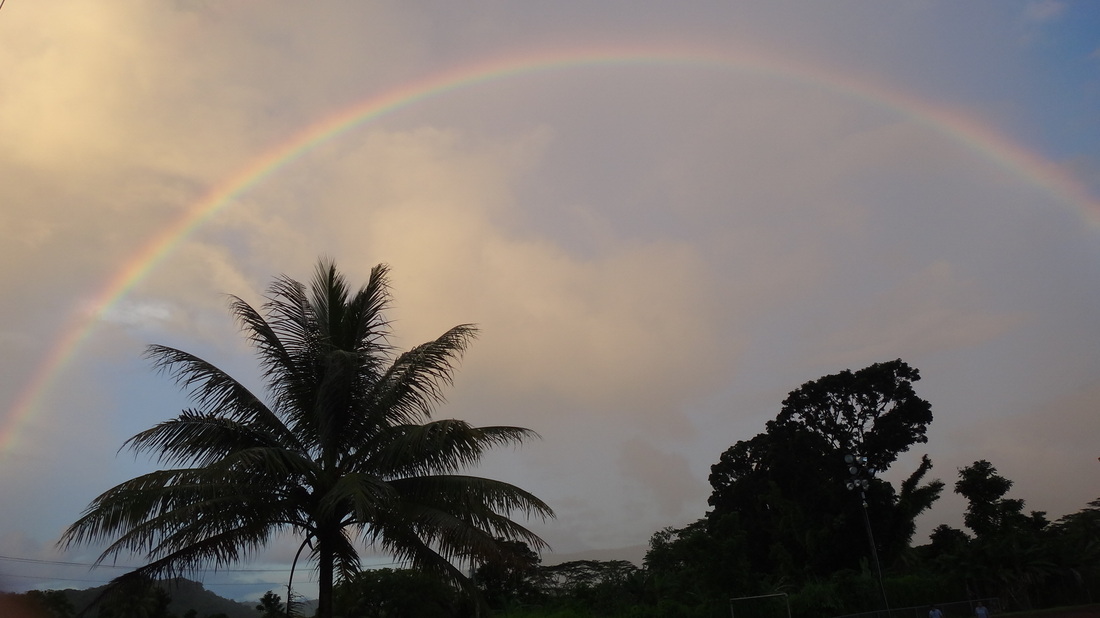
Recent Pohnpeian rainbow
|

